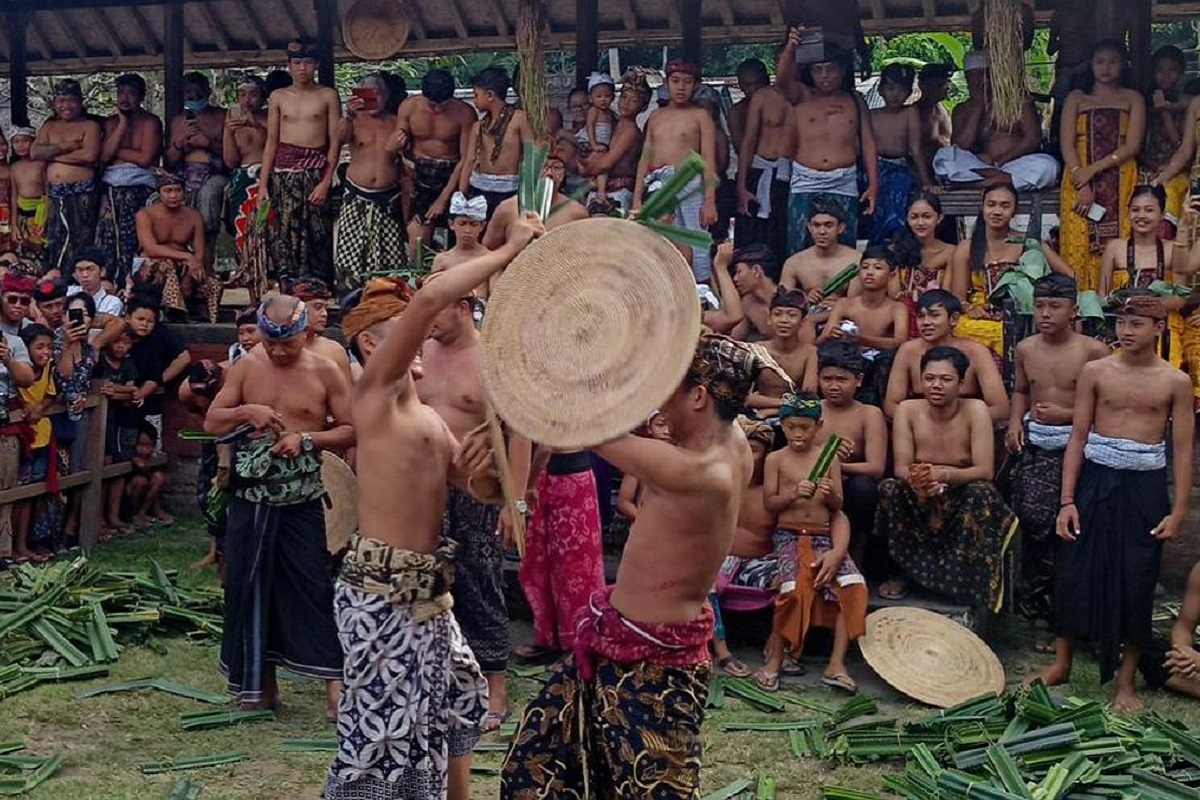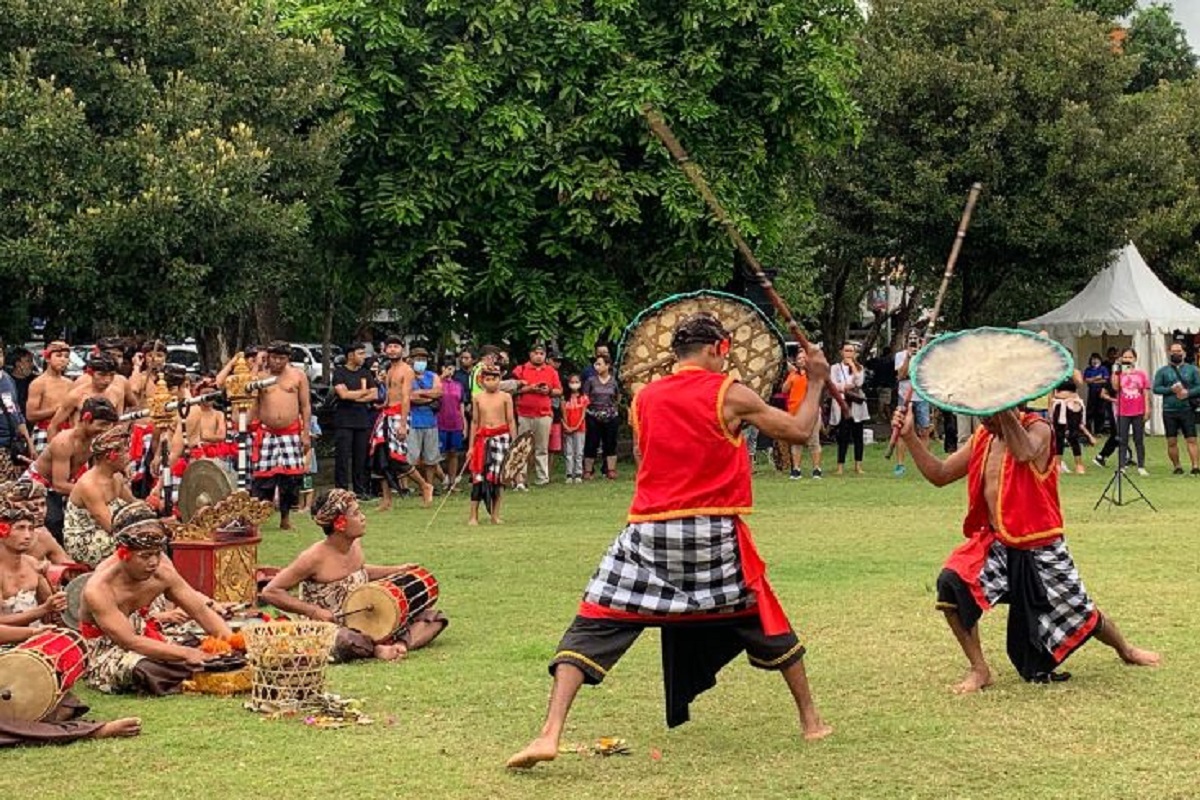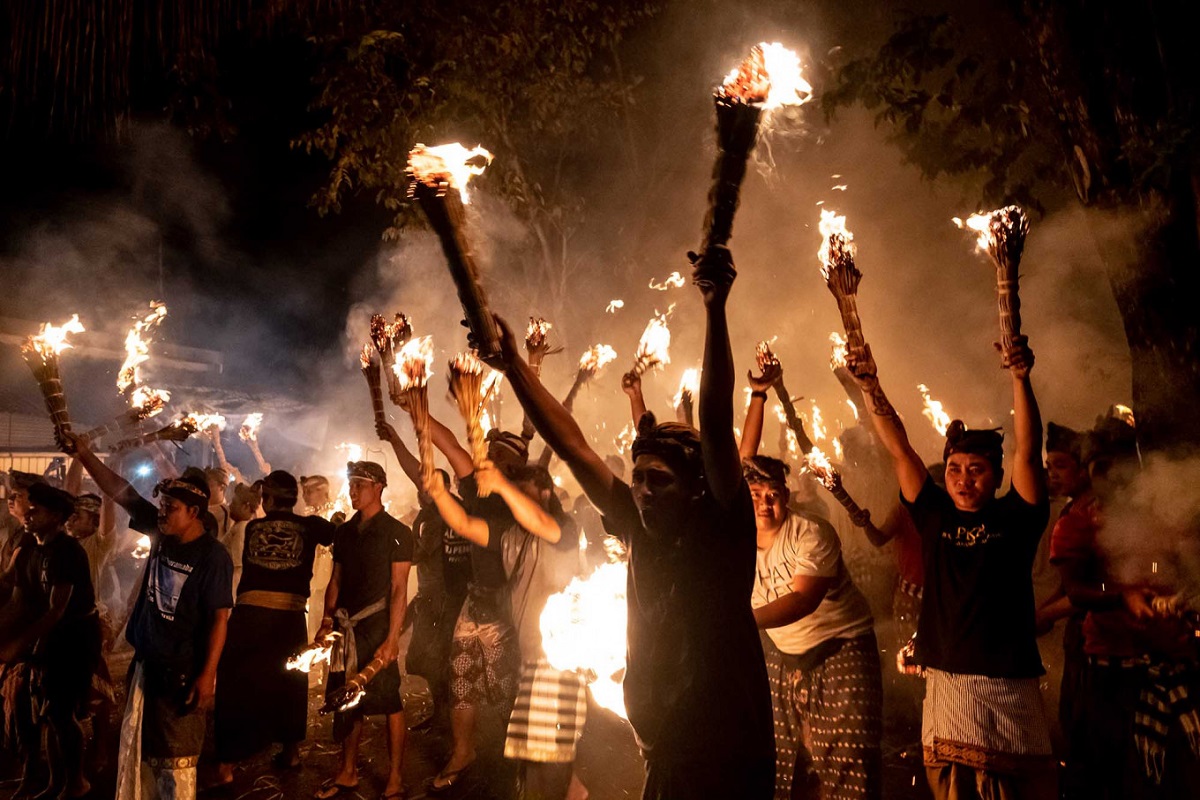Some of the Unique Ceremonies to See in Karangasem Regency, Bali
Karangasem in East Bali is one of the most interesting regencies on the island. Home to a number of traditional or ‘Bali Aga’ villages, Balinese Hindu’s ‘Mother Temple’ Besakih, and beautiful palaces built by Balinese royalty, there is a lot to see in the area. There are also long-held traditional ceremonies that are unique to the regency. Here are three that you must see if you are visiting Karangasem.
Perang Pandan
Perang Pandan is a unique traditional ritual that takes place in Tenganan Village, located in Karangasem Regency, not far from Candidasa. It is also known as “Mekare-Kare” or “Pandan War” due to the use of thorny pandan leaves as weapons in ‘friendly’ battles. The pandan leaves are rolled into a tight bundle, creating a small whip-like instrument called memedi. The participants wear traditional attire, including a sarong and a headband made of leaves, and engage in one-on-one combat.
The objective of Perang Pandan is not to harm or injure opponents, but rather to showcase agility, bravery, and skill. The participants demonstrate their ability to endure pain and fight with determination while also emphasizing camaraderie and respect for one another.
The ritual has its roots in Hindu traditions and is believed to have originated as a form of spiritual purification and a symbol of fertility for the community. It is also seen as a way to honor the god Indra, the deity associated with strength and courage.
Perang Pandan is not only a physical battle but also a cultural event that strengthens the bond within the community. It is accompanied by traditional music, dance performances, and other cultural activities.
Gebung Ende
Gebug Ende is a rain summoning ritual and folk game practiced by the people of Seraya Village in Karangasem Regency. The ritual is typically performed during the dry season and after planting as a means to invoke rain for agricultural purposes.
During Gebug Ende, men and children participate in a playful battle using specific tools called gebug and ende. The gebug is a long rattan stick, measuring approximately 1.5 to 2 meters in length, which serves as a bat. The ende, on the other hand, is a circular woven dry cowhide, acting as a deterrent.
The participants, dressed in traditional Balinese attire with colors such as red, yellow, green, and gold, engage in friendly combat. They use the gebug to strike the ende, attempting to hit and dodge their opponents’ strikes. The game incorporates skill, agility, and coordination, creating an exciting and lively atmosphere.
Beyond the playful aspect, Gebug Ende holds a deeper cultural significance as it is believed that through the collective energy and spirit of the participants, the ceremony can bring about rain, which is essential for agriculture and the prosperity of the community.
Gebug Ende showcases the Balinese people’s connection with nature and their reliance on the environment for their livelihoods. It also highlights the community’s strong bonds and the preservation of traditional customs and practices.
Terteran
Also known as “Fire War” this is a ritual performed in Jasri Village. The Terteran tradition is associated with the Aci Muu-Muu village ceremony, which takes place every two years on the even-numbered years. This ceremony occurs on Pengerupukan, the day before Nyepi (the Day of Silence) on Tilem Kasanga day, which is a significant day in the Balinese calendar.
The purpose of the Terteran tradition is to neutralize and ward off evil spirits that may disrupt human life. The term Terteran is derived from “throwing,” signifying the action that takes place during this event.
During the Terteran, participants engage in a symbolic battle using fire as a cleansing element. The villagers throw burning coconut husks and other flaming objects at each other, creating a visually striking scene. This fiery exchange represents the confrontation and expulsion of negative forces and evil spirits from the village, ensuring the well-being and harmony of the community.
These three amazing ceremonies have been held for centuries and are little changed from their beginnings. To witness them first hand is something you will never forget.
Do you enjoy seeing unique ceremonies and traditions when you visit somewhere new? Tell us about the most interesting ceremony you have seen in the comments box below.



